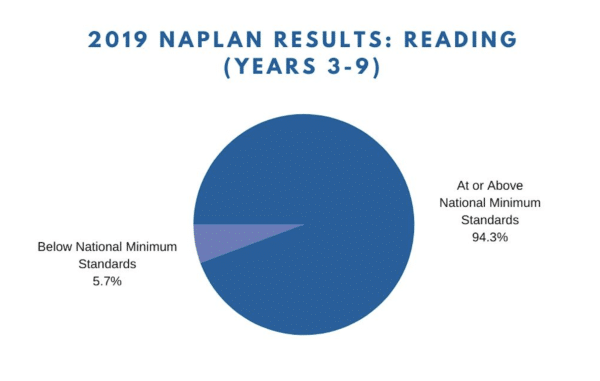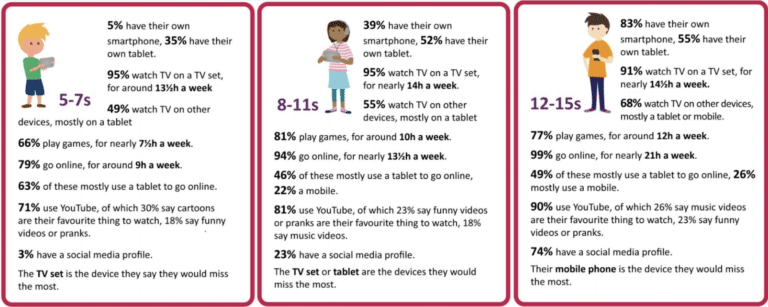Why 5% of Australian Students Perform Below National Literacy Standards
Economic statistics and studies continue to show how important it is for students to develop literacy skills. We have seen that economies are boosted when literacy rates are higher and students who develop solid literacy skills have an exceptional ability to become excellent critical thinkers, expand their vocabulary and can develop mastery in other school subjects. Unfortunately, these same stats and test results also show that not all students are headed in this direction. According to Australia’s 2019 NAPLAN performance results, 5% of students between Year 3 – Year 9 are functioning below Australia’s national reading standards. Why might this be?
1. Increase in Digital Distractions Outside of the Classroom
Now that we are in the “Digital Age”, every aspect of a child’s life involves technology, and as a result, there are so many forms of entertainment now competing for kids’ attention, including social media platforms, streaming services, and especially video games. And, sadly, studies show that, as children grow older, the importance of reading for enjoyment declines. This is why it is important to find educational resources that are not only curriculum-aligned but also engaging for children in ways they love. The number of digital literacy resources that are hyper-engaging is few and far between, but those that do exist are adaptive to fit the needs of kids at various reading levels.
Read now: Free curriculum-aligned reading game that kids choose to play.
2. Limited Parental Intervention
According to the 2015 Australia’s Kids & Family Reading Report, 66% of parents of kids aged 6-17 believe that reading skills are the most important skills their children can have, before social skills, critical thinking skills, and math skills. However, in order to strengthen reading skills, students must read more.
“It is not a mystery that the more children read, the better readers they become, and the better readers they become, the more they enjoy reading.”
David Peagram, Managing Director, Scholastic Australia & New Zealand
A Common Sense Media study on Children, Teens, and Reading in 2014 mentions in-home variables that play a factor in reading frequency such as the number of books purchased for readers, how often the child’s parent reads, and how much time is built in a child’s schedule for reading. For example, 57% of frequent readers (i.e. children who read more than 5 times per week) have parents who set aside time for them to read. But, for children who read less than 1 time per week, only 16% of their parents set aside time for them to read. Fortunately, these in-home variables are easier to change than other variables that also make an impact on reading frequency (i.e. income, location, race).
For tips to share with parents on how to create a reader-friendly home, check out this amazing article.
3. Decrease In Classroom Engagement
A student’s level of engagement influences how much they learn during a lesson. About 20 percent of students in Australia are consistently disengaged in the classroom. These students may find their schoolwork uninteresting, are inclined to give up on challenging tasks due to lack of self-determination, will seek to distract themselves, and simply tune out of class activities. On the bright side, most teachers acknowledge the importance of student engagement and actively seek solutions that work for their classrooms. For advice on how to choose literacy resources for the classroom that excite students and are effective, visit this blog.
Read now: How a Queensland educator engages her reluctant readers
4. Assessment Test Difficulty
There is also the possibility that students perform below national standards due to the difficulty of assessment tests. Tests like the NAPLAN are being used by some parents to directly compare their child’s performance against their classmates or other children. However, there is much more to a child’s literacy ability than a score on a test. The NAPLAN test is proving to have created negative impacts on the test-takers, with about 90% of students feeling stressed before taking it, affecting student wellbeing and learning ability. The formal, rigid nature of the test also aligns less with recent classroom approaches, which focuses on more in-depth learning. Although these tests do assess important information, there needs to be an understanding that improving this score is not merely about getting a child to read what is delivered on the exam, but also to read more on their own and to engage in what they are reading.
These are just a few possible reasons why 5% of students in Australia still remain below the national average. What are other factors you’ve identified that may contribute to students falling behind? Share a comment on our social post on our Instagram, Twitter, Facebook or LinkedIn.
Categories
comments for this post are closed



